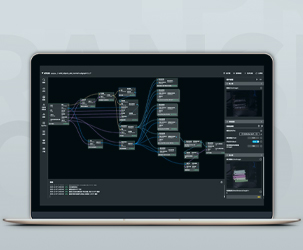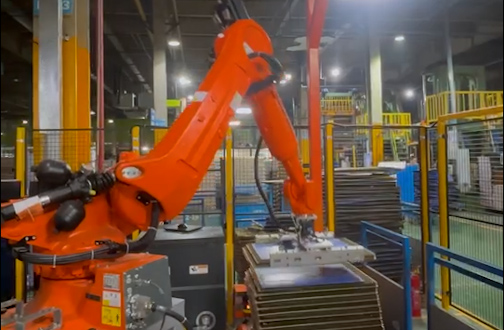On the refractory materials production line, there is one process that seems simple yet poses great challenges — depalletizing. Traditional manual depalletizing is labor-intensive, inefficient, and involves safety risks. Meanwhile, complex stacking patterns often make automated equipment “back away.”
Today, through a successfully implemented project at a leading refractory materials manufacturer, we’ll reveal how 3D vision technology tackles these challenges and enables large-scale intelligent depalletizing applications.
== Solution ==
This project adopts a “one-to-one” 3D vision intelligent depalletizing system. The system consists of one high-performance 3D camera serving as the “smart brain,” guiding one industrial robot to complete the entire depalletizing process.
When a kiln car loaded with refractory bricks enters the workstation, the 3D camera quickly captures the entire stack information. Within seconds, the system accurately calculates the picking coordinates and poses of each brick and sends them to the robot in real time. The robot then performs efficient and orderly picking and unloading operations until the whole stack is fully depalletized, achieving truly unattended and on-demand automation.
== Technical Highlights ==
So, how “smart” is this system exactly? Let’s look at the real data:
Exceptional Adaptability
Successfully handles over 25 types of refractory brick stacks with different shapes and sizes — even special stacks with compressed layers can be precisely recognized.
High Precision
The vision-guided depalletizing process achieves an on-site verified recognition accuracy ≥99.9%, while the calculated coordinate deviation is stably controlled within ±2 mm, ensuring reliable guidance for robotic grasping.
Intelligent Error Detection and Alarm
When encountering incomplete stacks, misaligned bricks, or abnormal orientations, the system immediately triggers an alarm to request human intervention, effectively preventing production incidents and ensuring continuous workflow stability.
== Customer Value ==
For enterprises, the value of technology ultimately lies in its impact on efficiency and cost:
Cost Reduction:
Replaces repetitive manual tasks, directly reducing labor and management costs while minimizing safety risks caused by fatigue.
Efficiency Improvement:
Robots can operate 24/7 with consistent cycle time, significantly boosting overall production line throughput.
Quality Enhancement:
Automated operation prevents product damage due to human handling, ensuring consistent product quality.
Flexibility:
When product types change, the system can switch tasks quickly through software adjustments, supporting flexible production for small batches and multiple varieties.
3D vision is no longer just a laboratory concept — it is now empowering traditional manufacturing in real production environments and solving real industrial challenges. Intelligent depalletizing is just the first step toward smarter automation.
Transfer Technology is dedicated to applying advanced 3D vision technology to every stage of industrial automation. If your production faces similar automation bottlenecks, feel free to contact us for a tailored solution for your industry.












 Return to List
Return to List







